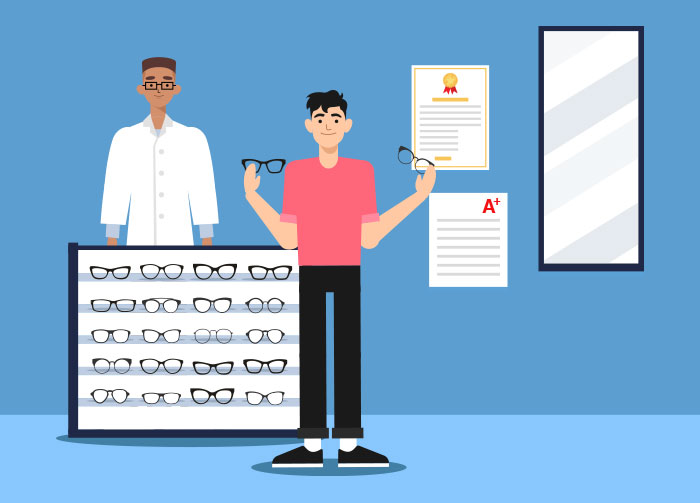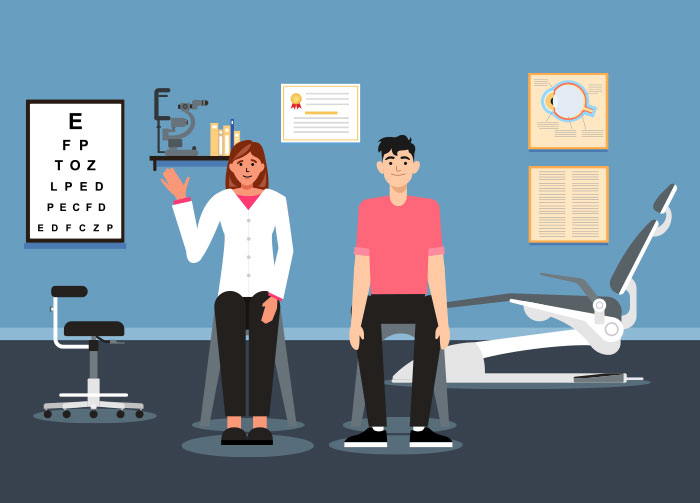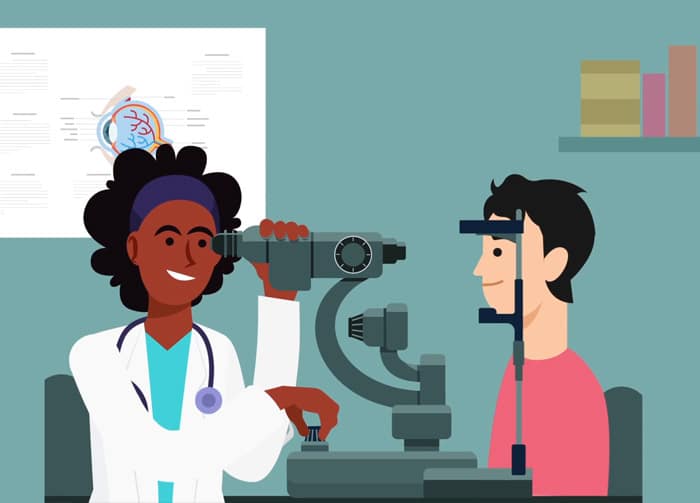The 3 Os of the Eye Care Team
Optician, Optometrist and Ophthalmologist
Each of the 3 Os of the eye care team plays a critical role in delivering quality eye care. But do you know who is responsible for what?
The Optician

Let’s start with the optician. An optician is a licensed health care professional who is trained to help you see better – whether you are near- or far-sighted, or have low vision due to more complex eye health issues. Opticians are specially trained to design, fit, and dispense eyeglasses, contact lenses, low vision aids, and prosthetic ocular devices.
Opticians must complete an accredited Opticianry program at an educational institution and pass an exam before they can practice as a Licensed Optician in Canada.
Opticians often own or work in a store that sells eyewear. A visit to an optician might be in order if you are looking for eyeglasses or corrective lenses, and you have a prescription for eyewear.
The Optometrist

An optometrist is a licensed health care professional who can perform eye exams, write prescriptions for glasses, contact lenses, and some medications, and diagnose and treat some eye diseases.
Following an undergraduate degree, an optometrist completes 4-5 years of training at a School of Optometry before they obtain their professional designation as a Doctor of Optometry.
An optometrist is often the first eye care professional you’ll encounter when you have an issue with your eyes or your vision.
Even if you don’t have any immediate issues with your eyes, it’s still a good idea to have regular eye examinations with your optometrist or ophthalmologist.
The Ophthalmologist

Let’s look at another O of the eye care team – the ophthalmologist. An ophthalmologist, also called an eye MD, is a medical doctor who has had specialized training in the management of eye diseases.
Ophthalmologist (say “OFF-thuh-MALL-oh-gist”) 🗣
Following a 4-year undergraduate degree, an ophthalmologist spends 4-5 years in medical school to become a physician, then an additional 5 years of specialized training to become an ophthalmologist. Those who subspecialize in a specific area of eye disease take an additional 1-3 years of training beyond this.
Ophthalmologists can diagnose, treat and prevent serious eye diseases like glaucoma, cataracts and age-related macular degeneration.
On top of being medical specialists, ophthalmologists are also highly trained surgeons who perform a range of procedures like corneal transplantation and repairing damaged retinas using a variety of specialized tools from lasers to microsurgical devices.




